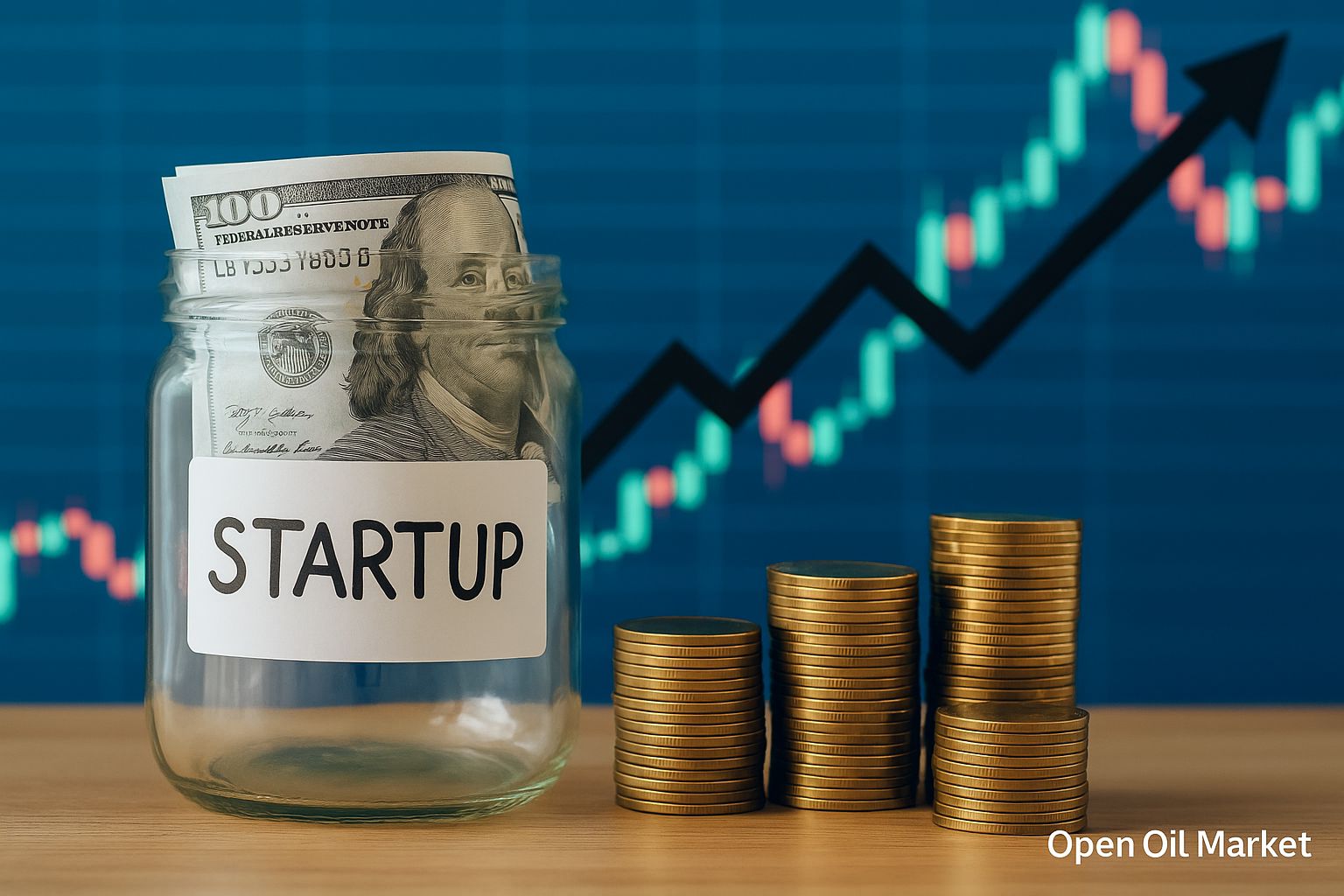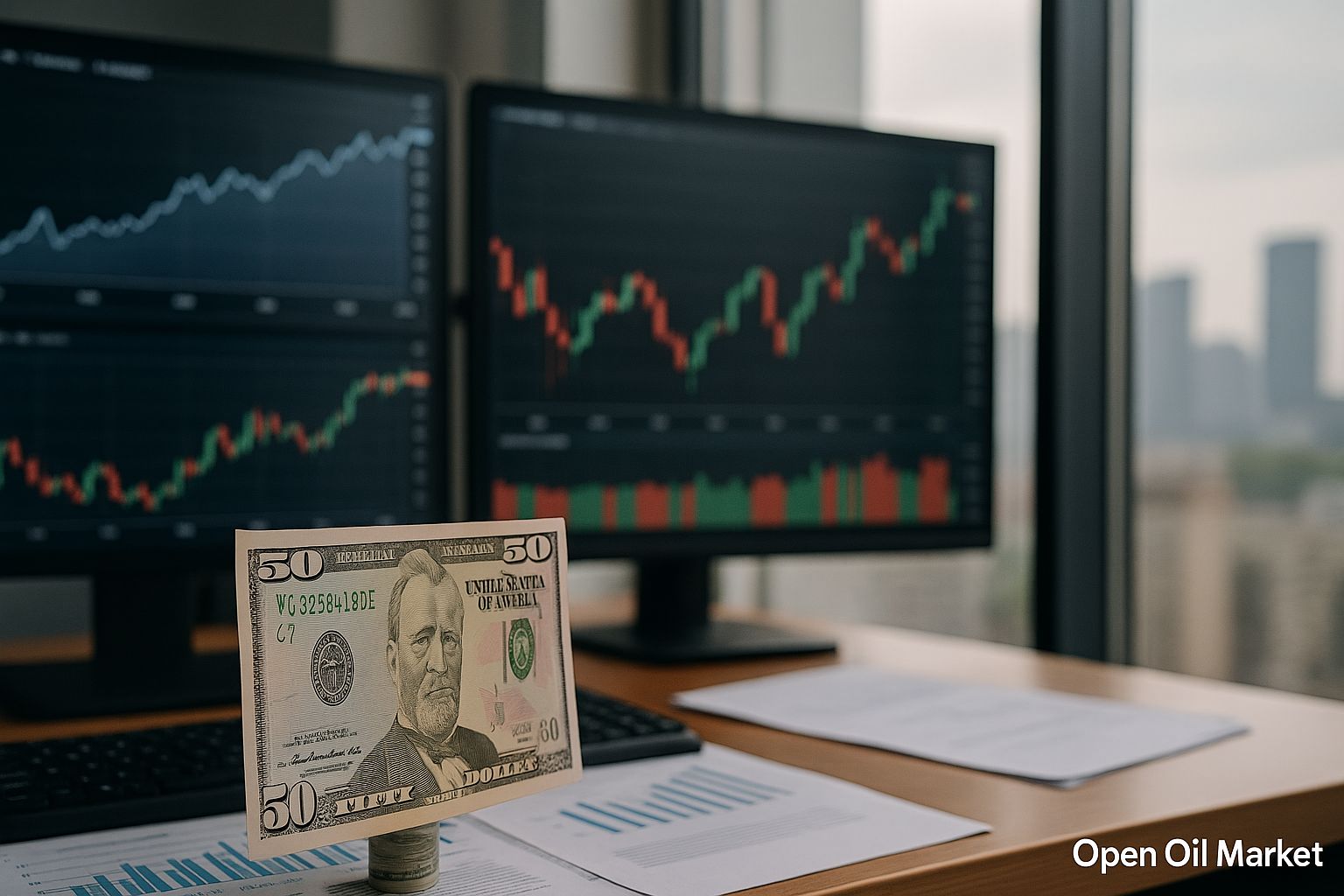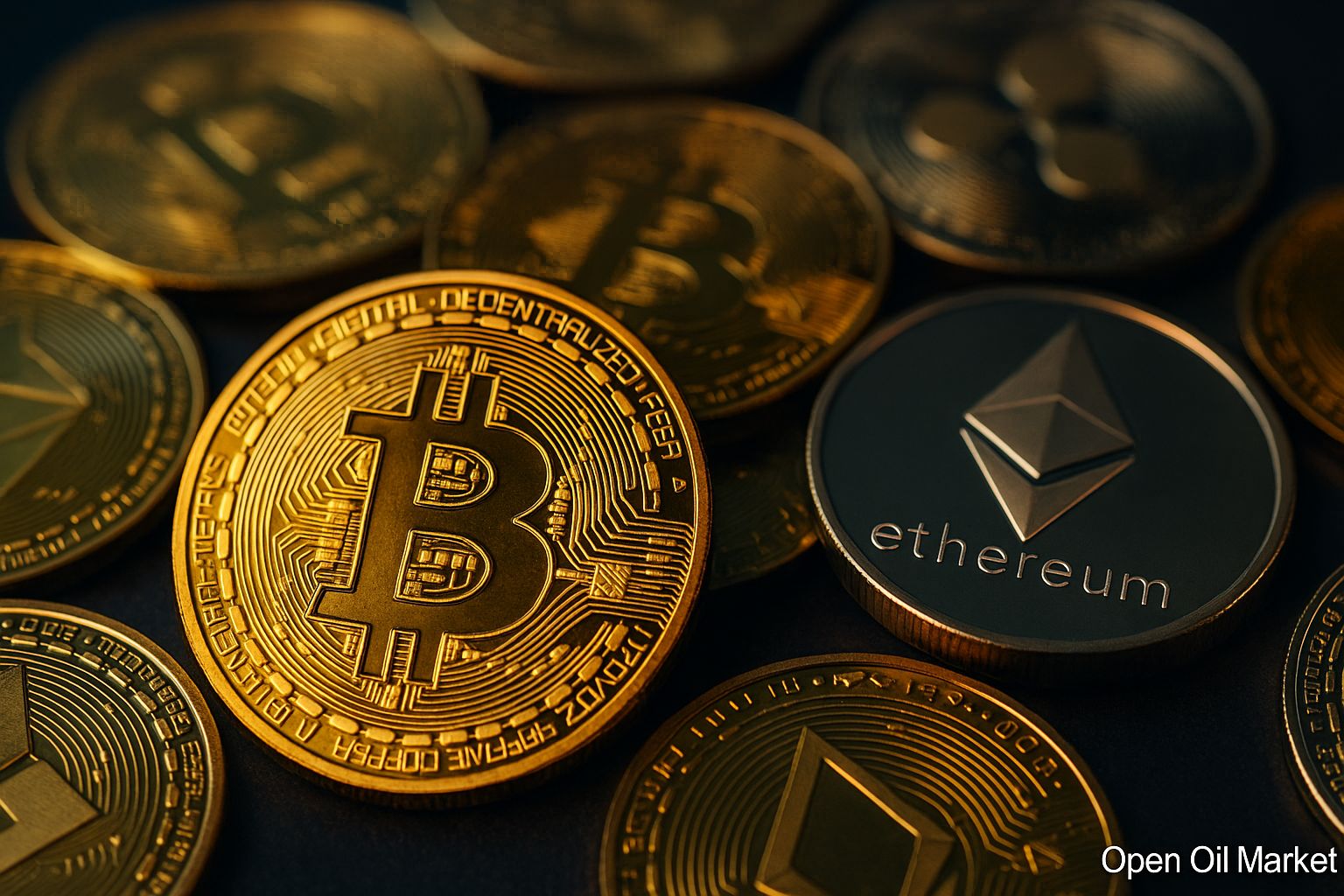
Global Startup and Venture Capital News for August 11, 2025: The Return of Megafunds, Record AI Rounds, Successful IPOs, Mergers and Acquisitions, Technology Trends, and Development in CIS Markets.
By mid-August 2025, the global venture capital market is showing a robust recovery after several years of decline. Investors worldwide are once again actively funding technology startups, closing record-sized deals, while IPO plans are back in the spotlight. Major funds and corporations have resumed significant investments, launching new venture programs, while governments in various countries are increasing support for innovative businesses, striving to keep pace in the global technology race. Preliminary estimates indicate that the first half of 2025 has been the most successful period since 2021 in terms of total venture capital investments. In the US and Canada alone, startups raised approximately $145 billion (+43% compared to the same period last year) — a record half-year figure for the past three years. This powerful influx of capital is largely driven by a series of massive deals in the artificial intelligence sector.
Venture capital activity now spans all regions — from Silicon Valley and Europe to Asia, the Middle East, Africa, and Latin America. The United States is demonstrating particularly strong dynamics (accounting for the lion's share of global investments, a significant portion of which is funneled into the AI sector) and the Middle East (where startups in the region attracted around $2.1 billion in the first half of 2025, an increase of 134% year-on-year). In Europe, a shift has occurred: Germany has overtaken the UK in venture capital investment for the first time in a decade, indicating the strengthening of continental startup ecosystems. The situation in Asia is uneven: startup funding in China remains weak (with the regional decline at approximately 33% year-on-year), while India, Israel, Southeast Asia, and Gulf countries are attracting increasing amounts of capital. Even local markets (such as CIS countries) are striving to catch this new wave of growth despite external constraints. The overall picture suggests the emergence of a new global venture boom, although investors are still approaching deals selectively and cautiously.
- The return of megafunds and large investors. Leading players are forming record venture funds and increasing investments, reintroducing capital into the market and enhancing risk appetite.
- Megarounds of financing and new “unicorns.” Unprecedented investment volumes are raising startup valuations to record heights, particularly in the field of artificial intelligence.
- The revival of the IPO market. Successful public offerings of tech “unicorns” and new filings confirm that the long-awaited “window of opportunity” for exits remains open.
- Sector focus diversification. Venture capital is being directed not only to AI but also to fintech, climate projects, biotechnology, defense developments, and even crypto startups, broadening market horizons.
- A wave of consolidation and M&A deals. Major mergers, acquisitions, and strategic investments are reshaping the industry landscape, opening new opportunities for exits and scaling companies.
- Global expansion of the venture market. The investment boom is reaching new regions — from the Gulf countries and South Asia to Africa and Latin America — forming their own technology ecosystems.
- Local focus: Russia and CIS. Despite restrictions, new funds and initiatives are emerging to develop local startup ecosystems, attracting the attention of investors to the region.
The Return of Megafunds: Big Money Back in the Market
Major investment players are making a triumphant return to the venture arena, signaling a new growth in risk appetite. The Japanese conglomerate SoftBank is once again at the forefront after a period of quiet, announcing the establishment of the Vision Fund III, which is expected to amount to $40–50 billion, focused on advanced technologies (with a particular emphasis on AI and robotics). Sovereign funds from the Gulf countries have also become more active: governments are investing billions of dollars in tech projects and initiating state megaprograms to develop the startup sector, creating their own tech hubs in the Middle East. Concurrently, dozens of new venture funds — both independent and corporate — are being launched globally, attracting significant institutional capital for investments in high-tech industries.
Notably, leading firms from Silicon Valley are also significantly increasing their presence. For instance, the venture giant Andreessen Horowitz (a16z) is raising a record fund of around $20 billion, primarily aimed at late-stage investments in US AI startups. Industry estimates show that funds in the US currently hold an unprecedented stock of available capital — over $300 billion in uninvested funds — ready for action as market confidence returns. This influx of “big money” fills the ecosystem with liquidity, providing fuel for new rounds and supporting the growth of promising companies. The return of megafunds and large institutional investors not only intensifies the competition for the best deals but also instills confidence in the industry regarding future capital influxes.
Megarounds and New “Unicorns”: Investments Reach New Heights
The artificial intelligence sector remains the key driver of the 2025 venture boom, setting new records for funding volume. Investors worldwide are eager to invest in AI leaders, directing colossal sums into the most promising projects. Megarounds are announced almost weekly, confirming the status of AI as the main “magnet” for venture capital. For example, Elon Musk's xAI startup secured approximately $10 billion in funding (its valuation is now estimated at over $100 billion), while the industry flagship OpenAI attracted around $8.3 billion at an estimated valuation of about $300 billion. The unprecedented scale of these deals underscores the immense market interest in AI sector leaders.
Interestingly, the investment frenzy extends not only to AI projects themselves but also to the infrastructure surrounding them. For instance, the American-Israeli startup Vast Data, specializing in data storage systems for AI, is negotiating a multi-billion-dollar funding round at a record valuation. Investors are willing to invest in the “picks and shovels” of the AI ecosystem, recognizing the strategic importance of this infrastructure. Consequently, such megadeals are spawning a wave of new “unicorns,” especially within the artificial intelligence sector and related industries. In the second quarter of 2025, nearly half of all venture investments worldwide were directed to AI projects. The sustained enthusiasm around AI ensures an historically unprecedented capital influx, although experts warn of the potential overheating of the sector and the possible overvaluation of individual companies.
The IPO Market Comes Alive: The “Window of Opportunity” for Offerings is Open
The global primary public offering (IPO) market has confidently revived after an extended pause and continues to gain momentum. In Asia, Hong Kong has ignited a new wave of tech IPOs: in recent weeks, several large tech companies have successfully gone public, attracting multi-billion-dollar sums. For instance, the Chinese battery manufacturer CATL raised around $5.2 billion in its IPO, demonstrating investors’ readiness to once again actively engage in public offerings in the region. Other heavyweights are also lining up for listing on the Hong Kong stock exchange, such as chip developer Montage Technology, which plans to raise up to $1 billion, highlighting the revival of IPO activity, at least in Asian markets.
In the US and Europe, the situation is also markedly improving. The American fintech “unicorn” Chime recently made a successful debut on the stock market: on its first day, its shares soared by over 30%, reaching a market capitalization of around $18 billion. This success inspires other candidates. The designer platform Figma had its long-awaited IPO, raising about $1.5 billion with a valuation between $15 and $20 billion. Figma’s shares started with strong growth, confirming high investor demand for tech companies. Several notable startups — including payment service Stripe, the social platform Reddit, and the Indian e-commerce project Meesho — have already filed applications or are actively preparing for an IPO in the second half of 2025. All of this signals that the “window” for IPOs remains open longer than many expected, and the market is poised to absorb new offerings.
It is worth noting that even the crypto industry seeks to take advantage of the revitalization of the IPO market. The cryptocurrency exchange Bullish (which counts Peter Thiel among its investors) has filed for an IPO in the US, planning to list under the ticker BLSH at an estimated valuation of around $4 billion. This indicates that the revival of primary offerings covers the broadest range of companies — from fintech to crypto startups. The continued active IPO wave is vitally important for the entire venture ecosystem: successful exits to the public market finally allow funds to secure profitable exits and redirect freed-up capital to new projects. Despite the ongoing selectivity among investors, the prolonged “window” encourages more startups to consider going public and to prepare for listings in advance.
Investment Diversification: Fintech, Climate Projects, and Biotech Back in Focus
In 2025, venture investments are being allocated across an increasingly broad range of sectors — the market is no longer solely focused on artificial intelligence. After last year's downturn, there is noticeable revitalization in fintech: global investments in financial technology startups have increased by about 5% year-on-year in the first half of 2025 (to approximately $22 billion), indicating a return of confidence after the “fintech winter” of 2022–2023. The sector received an additional boost from successful IPOs of fintech companies (including the previously mentioned Chime), instilling optimism among investors about future exits. Concurrently, there is a boom in “green” technologies: funds are keen to finance climate projects — from renewable energy and electric transportation to innovative nuclear facilities. For example, the Swiss startup Climeworks raised $162 million for the development of direct air capture systems for CO2 (the company has received over $1 billion in total investments). Similarly, interest in biotechnology and medical startups is rising.
The cybersecurity segment remains a key market driver (as evidenced by the aforementioned multi-billion-dollar deals in this area). Crypto and Web3 projects, having endured a significant slump, are beginning to recover — venture investments in blockchain startups exceeded $10 billion in the second quarter of 2025 (the highest since 2022). Thus, the venture market demonstrates maturity and breadth: capital is now distributed across various sectors — from finance and energy to agrotech and defense. Investors are diversifying their portfolios, making the innovation ecosystem more resilient to the overheating of individual sectors.
Consolidation and M&A Deals: Major Players Are Scaling Up
High company valuations and stiff competition for markets are driving the startup ecosystem toward consolidation. Major mergers and acquisitions are once again coming to the forefront, reshaping the power dynamics in the industry. Tech giants are willing to spend tens of billions of dollars to remain competitive in the race for key innovations. For example, Google agreed to a record $32 billion acquisition of cybersecurity developer Wiz — this deal could become the largest startup acquisition in history. Meta Corporation invested $14 billion in Scale AI, acquiring around 49% of its shares at a valuation of approximately $28 billion. Even the leaders of the AI industry are pursuing strategic acquisitions: OpenAI announced the purchase of an AI device development startup (a project by designer Jony Ive) for $6.5 billion. In the European defense technology sector, record deals are being recorded: the German AI startup Helsing raised approximately €600 million (the round was led by the Prima Materia fund) and increased its valuation to around €12 billion, becoming one of the most valuable young companies in the industry.
Such megadeals demonstrate that even established players are willing to invest colossal resources to strengthen their positions. Overall, the current activity in mergers, acquisitions, and large venture deals reflects the redistribution and maturation of the industry. Mature startups are either merging with one another or becoming targets for acquisition by corporations. For venture funds, this is a long-awaited opportunity to secure profitable exits and redirect capital into new projects.
Global Expansion of the Venture Market: New Regions Gaining Strength
The venture boom of 2025 is acquiring a truly global scale, encompassing markets that have only recently remained on the periphery of the technological scene. The Middle East is forming giant funds and tech hubs to support innovation, while investors from the Gulf countries are increasingly financing startups both at home and abroad. New “unicorns” are emerging in South and Southeast Asia, and unprecedented capital influx is being noted in young tech companies in Africa and Latin America. Competition for the best projects is now unfolding on a global scale — funds are seeking promising teams from San Francisco and Berlin to Dubai, Nairobi, and Mexico City.
- Middle East (MENA): startups in the region attracted approximately $2.1 billion in the first half of 2025 (+134% year-on-year), with the UAE and Saudi Arabia contributing significantly to this growth.
- Africa: on the continent, startups secured around $1.35 billion in funding during the first six months of 2025 (an increase of 78% compared to the previous year), with record investment volumes in Nigeria, Egypt, and Kenya.
- Latin America: venture funding in the region grew by 16% in the second quarter of 2025 (quarter-on-quarter). Mexico has overtaken Brazil in investment volumes for the first time since 2012, boosted by significant deals (for example, the fintech startup Klar raised $170 million).
In Asia, metrics vary: Indian and Southeast Asian startups maintain a steady inflow of capital (despite the downturn in China), while Israel has reached a two-year high in venture deals. In China itself, against the backdrop of declining private venture investments, the authorities in Beijing and Shanghai have established state venture funds worth around 100 billion yuan each (~$14 billion) to support technology startups and stimulate innovation. Thus, the global venture ecosystem is becoming more distributed: new innovation centers are strengthening beyond traditional startup capitals.
Russia and CIS Countries: Local Focus Amid Global Trends
Despite external constraints, Russia and neighboring countries are also experiencing a revival of venture activity. New funds and investment platforms aimed at supporting local technologies are emerging. For instance, PSB bank launched a venture fund with a volume of 12 billion rubles, the Kama Flow fund established a fund of 10 billion rubles, and the medical holding “Medscan” along with its partners founded a platform for investing in medtech startups with a volume of up to 10 billion rubles. Major corporations are also increasing their presence: for example, the “Tinkoff” ecosystem is developing the T-Invest fund for investments in rapidly growing Russian projects. Significant deals are also taking place in the local market: the Krasnodar foodtech startup Qummy raised 440 million rubles at a valuation of around 2.4 billion rubles and announced plans for an IPO in the coming years. In 2025, foreign investors were once again allowed to officially participate in deals with Russian technology companies, opening the doors to foreign capital influx (primarily from “friendly” countries).
While the absolute volumes of venture investments in the region remain modest, they are steadily increasing. According to the Russian Venture Company (RVC), approximately $80 million was invested in Russian technology startups from January to June 2025 — about 70% more than the previous year (though this is still trivial compared to the global market). Local investors are focusing on projects in AI, import substitution, cybersecurity, and B2B services. Gradually, a new wave of tech entrepreneurs capable of developing businesses under challenging conditions is forming. The regional venture ecosystem is striving to take advantage of the global upturn to lay the groundwork for future growth, even if it takes more time and reliance on internal resources.
Conclusion: Cautious Optimism and Focus on Quality Growth
By the end of summer 2025, sentiments in the venture industry remain cautiously optimistic. Successful IPOs and large rounds indicate that the bottom of the downturn has been passed, and investors are once again ready to risk their capital. However, a degree of caution persists: preference is given to startups with sustainable business models, healthy economics, and a clear path to profitability.
The strong influx of funds into AI, fintech, and cybersecurity sectors instills confidence in further market growth, but at the same time, venture funds are paying increased attention to diversification and risk management. The main priority becomes the quality of growth: a focus on the long-term sustainability of companies and reasonable project valuations, so that the new upward trend does not lead to another overheating. Thus, the venture market is entering the next phase of development with cautious optimism, emphasizing a balanced approach and maintaining a healthy equilibrium between growth and risk.




